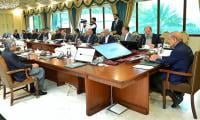Taxes are required to meet the expenditure that a country needs to serve its people. Pakistan operates through hybrid system whereby Federal Board of Revenue (FBR) collects taxes on goods and the provinces levy on services.
The FBR revenue is only 10% of the GDP, which is one of the lowest in the world. Revenue officials claims their system very efficient whereas business community terms it very coercive in nature. Different analysts believe it is in an auto mode.
Every government that comes in power boasts of having turned the FBR around but the end result is “back to square zero”.
The issues facing tax administration are: why FBR fails to register growth as percentage of GDP; what kind of the system exists in the Pakistan and what are its fault-lines, if any; what are the best taxation practices at global level; and how could the same be transposed in FBR; lastly, what structural and operational changes could make it an efficient organisation?
An analysis of these issues will put the taxation system in objective perspective.
Traditionally CBR, before it was renamed reformed FBR in 2008, used to be very lean and currently it pursues top-down approach and, like Parliament, takes decision by majority vote in Board-in-Council.
The FBR initially introduced functional model but now has reverted to territorial model, albeit on recommendation of Reform Commission constituted in 2014.
It has a work force of about 30,000 personals and more than 100 officers in BS-21 and dozen in BS-22. Direct Taxes (Income Tax) and Indirect Taxes including Sales Tax, Federal Excise Duty and Customs Duty.
The FBR maintains a huge organisation but ends up in collecting just 10% of the GDP. Obviously the FBR will not offer any plausible reason other than always claiming about 10-20% annual growth between 2013-18.
One of the practicing economists finds such growth in taxes at the bar of enhancing the tariff rates inimical to economic cycle.
In this context another international experts pointed out that Pakistan has a skewed system whereby 90% of the revenue is collected through 100 main corporate entities. General perception in tax literature points out that in a country with a population of 220 million only less than one lac persons pays more than one lac rupees and another roughly four lacs make some payment. It is in this context that the business community always complain that the FBR focuses only on individuals that are already burdened with taxes conveniently forgetting incidences of taxes to end consumers.
The FBR conducted many studies starting from Shahid Hussain Task Force, TARP Reform Document and changes made as per agreement with the IMF but they were hardly implemented. Similarly, every regime in the FBR ends up with more collection at source in the name of “Innovational approach.”
Comparative analysis of efficient taxation systems will be helpful to understand why the FBR continues to be trapped in low trajectory. In India, there is a separate Board of Inland Revenue while a separate Board for the Customs Duty. International Tax gurus including Dr Michael Keen term Australia and New Zealand as having put in place fourth generation of taxation model.
The Australian Taxation Office (ATO) collects all the domestic taxes where the Australian Customs collects the Customs Duty and Federal Excise Duty as well as other taxes on the import side. In America, the federal government collects only Inland Revenue and Customs Duty whereas each state collects General Sales Tax that is non-adjustable. In the UK, Her Majesty Customs and Revenue (HMC&R) collects both kinds of the taxes but have a distinct separate stream at operational level for Customs, Income Tax and Sales Tax.
Value Added Tax (VAT) is practiced in the most of countries except the USA. Be it as one may infer, as described by Dr Bird, “No single size fits all”. But the fact remains in most of the countries referred earlier, the taxes collected are high as much of 48% of GDP except in India where it is around 15%.
If the systems even in India could collect around 15% of GDP, why cannot Pakistan? To find some objective answer, we have to see Tax scheme or mischief in GST, Income Tax and Customs Duty. Pakistan’s FBR structural model is unwieldy, lack autonomy and no tenure protection for its head. It’s invested with powers in routine operational matters. On top of all it is virtually “FBR-in-Meetings” either internally or in parliamentary committees. Efficient tax organisations stated earlier are lean, their heads are posted on fixed tenure and don’t suffer from meetings syndrome and it doesn’t interfere in the field matters.
In order to transform the FBR as autonomous and efficient, it must have a lean structure and the revenue body should be headed by a forward looking practicing economist assisted with three separate members, each for Customs, Sales Tax,
Income Tax, HRM and a separate member of Information Technology. Few of international experts also suggested that the Policy Making Board should be separate from the Operational Board like Her Majesty Customs & Revenue, (HMCR) comprising of the reputed CEOs of corporate entities as well as from the government operating machinery. This policymaking board should in consultation with the ministries of Planning, Commerce and Industries make broader outlines for the guidance of Operational Board. Discretionary powers must be curtailed and the field enforcement functions decentralised.
(Continues)
The write is former FBR officer.
President called the Senate meeting under Article 54 of the Constitution
Crowd’s long wait due to persistent rain backed by heavy showers came to an end just for two deliveries with New...
Chief Justice Justice Faez Isa said amendments to the High Court Rules were necessary before appointment of judges
A division bench of the PHC comprising Justice SM Attique Shah and Justice Syed Arshad Ali heard the petition in which...
According to the Senate Secretariat, Gilani emphasized better coordination between the two Houses







